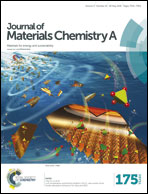Materials chemistry toward electrochemical energy storage
Abstract
Materials chemistry focuses on all aspects of the production of electrode materials or the properties or applications of materials related to energy storage, which thus plays an important role in the field of energy storage. Electrochemical energy storage includes the conversion reaction between chemical energy and electric energy, with the electric energy being stored in chemical bonds of electrode materials of both battery and pseudocapacitor types. Energy density, power density and safety of these devices, i.e. lithium ion batteries and supercapacitors, are mostly dependent on the electrode materials with high electroactivity, high electron/ion conductivity, and high structural/electrochemical stability. Following the function-directed materials design rule, we can select appropriate elements, chemical bonds, crystal structures, and morphologies of those materials toward high electrochemical performances. In this review, we summarize, from both theoretical and experimental viewpoints of materials chemistry, recent advances in designing electrode materials from element and structure selections to final morphology selection. Electronegativity, atom radius, chemical bonding behavior, and oxidation state have been identified as controllable materials properties to synthesize high-performance electrode materials. This review provides general materials chemistry rules to rationally design electrode materials with improved electrochemical performance.

- This article is part of the themed collection: JMC A Editor’s choice collection: Recent advances in batteries


 Please wait while we load your content...
Please wait while we load your content...